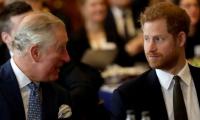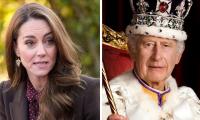If people really mattered, would wolves be allowed to lead the sheep? Or wolves in sheep’s clothing not be recognized and removed before they eat away the herd?
This is a model of governance which insists that people matter, and neither democracy nor development have any meaning unless they are inclusive and deliver their benefits without discrimination to all citizens of the state.
Ironically, this was also the model of governance chosen for the new state of Pakistan by its founder, but which was abandoned by his feudal associates who revived their native model of special privileges and unequal treatment which had already been defeated in the Subcontinent.
But 18 years later, the same model of governance was picked up by the founder of another state whose associates did not abandon his vision and implemented this model in letter and spirit.
This is a tale of two states that arrived at different destinations, depending upon where they stood on the scale of the 3-D model of governance. The founders of both had much in common, personally and in their vision for the new states they founded. Both Muhammad Ali Jinnah and Lee Kuan Yew came from middle class trading families. Neither had a feudal background nor were they dependent upon rentier incomes. Both were trained in the same discipline and earned their living by working and professional excellence. They both wanted an inclusive and non-discriminatory society and an egalitarian and accountable system of governance which would deliver benefits of independence and democracy to all citizens.
In his address to the Constituent Assembly on 11 August 1947, Quaid-e-Azam had outlined five features of governance to guide the new state of Pakistan: inclusive governance, impartial government, rule of law, equal treatment and religious freedom. Instead of implementing these features of governance through laws and policies, his lieutenants snatched defeat from the jaws of victory soon after independence by abandoning the vision of their leader and reviving a discredited model of medieval governance, once they controlled the reins of power. Which raises the question: did the landed aristocracy of Muslims use the brilliance of barrister Jinnah and his credibility to secure their interests, and turned their back on his guiding principles of governance for the new state soon after he passed away?
On the other hand, detailed discussions were held by Lee Kuan Yew and his lieutenants on the features of the model of governance that would help achieve the vision of delivering benefits of democracy and development for all citizens of the state of Singapore. These discussions led to formalizing a 3-D model of governance. This model delivers the benefits of democracy and development to all – not just to the rulers – and is based upon three pillars: discipline (of rule of law), development and democracy. Its clarion call says that ‘without the discipline of rule of law’, neither democracy nor development can have any meaning for the masses.
The model is thus explained through five logical steps by Lee Kuan Yew, founder of the state of Singapore.
One, it is a hallmark of a civilized society to live under a government chosen by free and fair exercise of the will of the people, and democracy would always be our way of life. But, where people are severely handicapped by poverty, illiteracy, ignorance and prejudices and made vulnerable to insecurity, threats or temptations, it is hypocritical to think, they would exercise their will freely and fairly.
Two, removing vulnerabilities of poverty, illiteracy, insecurity which undermine the dignity and free and fair exercise of the will of the people, are priority claims upon the government. In other words, ‘development of the people’ is a priority for a genuine democracy to flourish.
Three, human nature being what it is, empowering leaders to rule over lives and livelihoods of people in the name of development or democracy, without subjecting them to the discipline of rule of law would amount to allowing wolves to lead the sheep.
Four, abuse of power and self-dealing by wolves in sheep’s clothing is prevented by applying rule of law first upon the trustees of the people (rulers). This is based upon the principle that while the rights of all are same, the obligations upon the rulers are greater than the ruled.
Five, it is the non-discriminatory rule based society guided by fairness of rule of law that provides the best guarantee against abuse of power and unleashes energy and creativity that lifts a nation to achieve prosperity and power.
This is the model of governance that lifted Singapore from a third world country to a first world nation within 30 years. It tells us that nation-building in modern democracies is dependent upon creating a rule based society protected by discipline of rule of law.
The same principle was in ascendance as the medieval world was being replaced by the modern. Since the Roman Empire days, Italy held a prominent position in Europe for centuries. Italian was the language of diplomacy before French replaced it. Long before the East India Company appeared, the trading empires of Genoa and Venice had spread far and wide. With the Pope and headquarters of Catholicism in the Vatican, education was more widespread in Italy than elsewhere. And the University of Bologna (1088) was established before Oxford, Cambridge and Sorbonne. And Italy produced some of the most influential people of history including Marco Polo, Christopher Columbus, Galileo, Machiavelli, Michael Angelo, Leonardo Da Vinci to name only a few. And the Renaissance also took birth in Italy.
And yet, despite all these advantages, the Industrial Revolution which created new sources of wealth and power did not start in Italy but in England. What explains that? One of the most important factors credited with this phenomenon is the Glorious Revolution of 1688-89 which abolished absolute monarchy in England, introduced a Bill of Rights, widened individual liberties and brought political reforms introducing rule of law. It is this environment that unleashed the energy and creativity of people who felt secure that the rewards of their labour would be protected by rule of law and not be usurped by the high and mighty.
Similar rule-based societies protected by strict enforcement of rule of law enable people from developing countries including Pakistan to grow big and more successful in the US, UK and even Dubai, although some Asian countries with improved rule of law are attracting their talent back to the homeland.
But we have been avoiding implementing a 3-D model of governance whose features were outlined by the father of the nation. In the meantime, other countries have been overtaking us.
But the 3-D model is a spectrum and countries stand at different points. Singapore is generally credited with scoring 9 on a scale of 1-10 of this 3-D model of governance. Where Pakistan stands on it will determine how fast or slow it can realize its long delayed potential.
The writer designed the Board of Investment and the First Women’s Bank.
Email: smshah@alum.mit.edu
Lahore, city of 14 million people, has – again – topped rankings of world’s most polluted air
Over 50% of Pakistan’s cigarette market is controlled by illegal manufacturers who evade taxes
In their latest stroke of genius, our honourable representatives have effectively doubled number of judges in SC
Such scepticism is attributable to what I have come to call ‘Schrodinger’s Votes’
With one-third contribution to global economic growth, China is positioning itself as key player in international...
Parliament has never made genuine effort to reform judicial system, let alone modernise it







